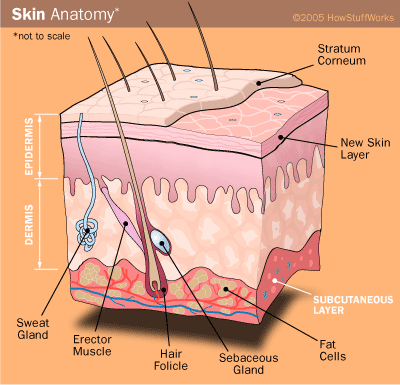For something that only reaches the thin upper layers of our skin, pigmentation can have a hefty impact on the way others see us -- and the way we see ourselves. A person's skin color is, after all, perhaps the very first thing you notice about him, since skin is our largest and most visible organ. And though the days when a particular complexion was the ultimate sign of beauty may be behind us, your skin tone can still say a lot about you.
Skin gets its color primarily from melanin, a pigment produced by melanocyte cells in the skin. The darker the skin, the more melanin it contains [source: MedicineNet]. Freckles and beauty marks likewise indicate a higher concentration of the pigment in certain areas.
Advertisement
Melanin also performs another vital function: It protects the skin against harmful UV rays. Sun exposure, in fact, stimulates melanin production, but if your skin is dark to begin with, you are less likely to burn quickly -- that doesn't mean you won't burn at all, though, so brown-skinned people should still take precautions before they come into contact with UV rays.
Even if your melanin production spikes, the sun can still harm you in many ways. Melanoma is the most deadly skin disease caused by sun exposure, but there are other serious ones, as well. From a cosmetic standpoint, spending too much time in the sun could also leave you with permanently blotchy skin that is lighter or darker in some areas than the skin around it [source: Your Skin Doctor].
Read on to find out exactly how melanin colors your skin.
Advertisement


